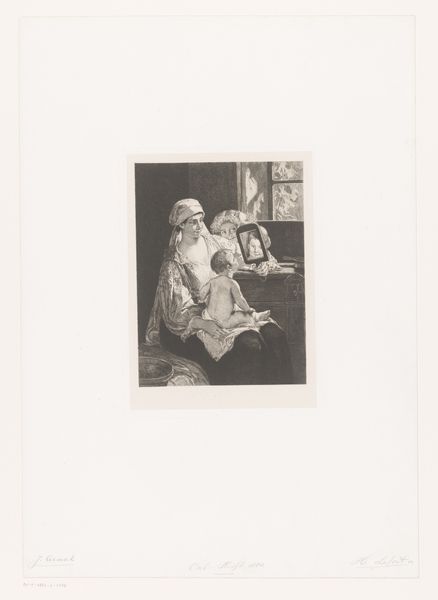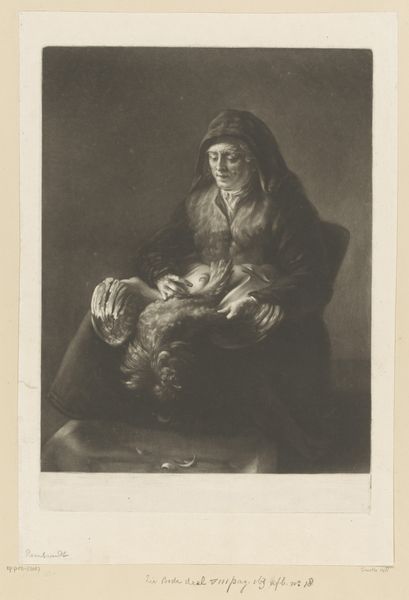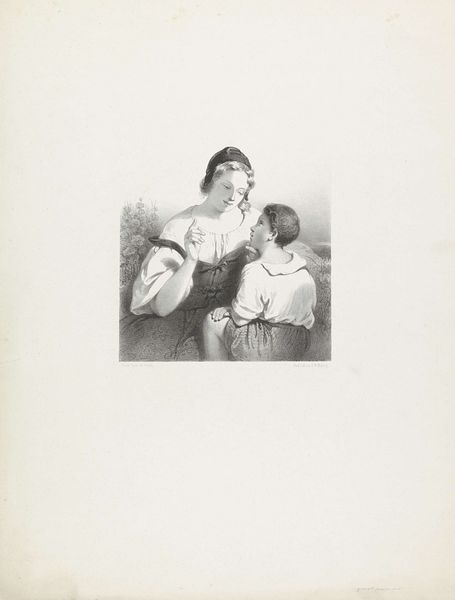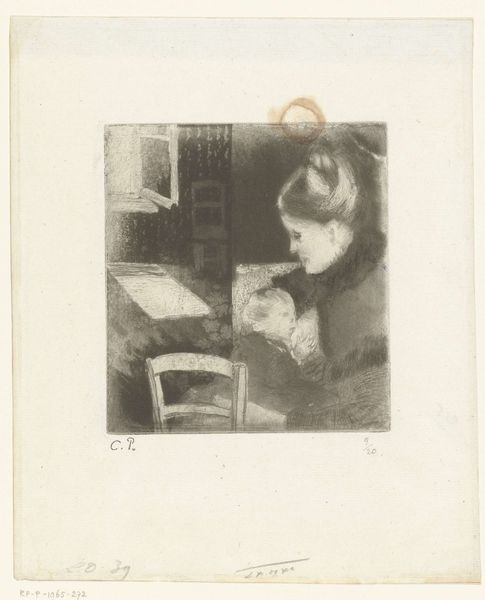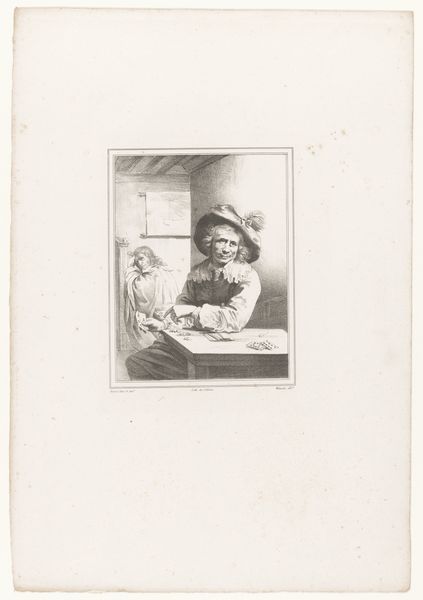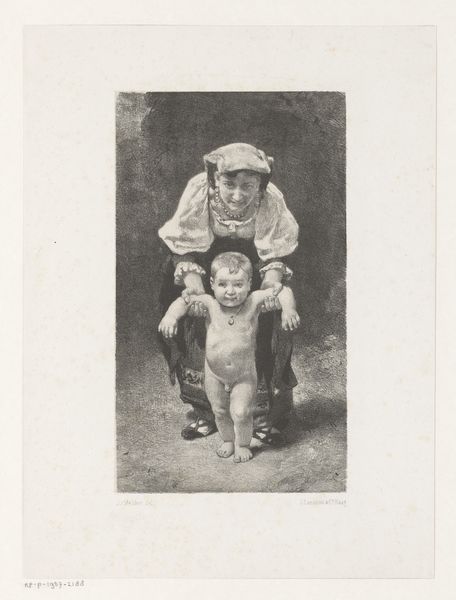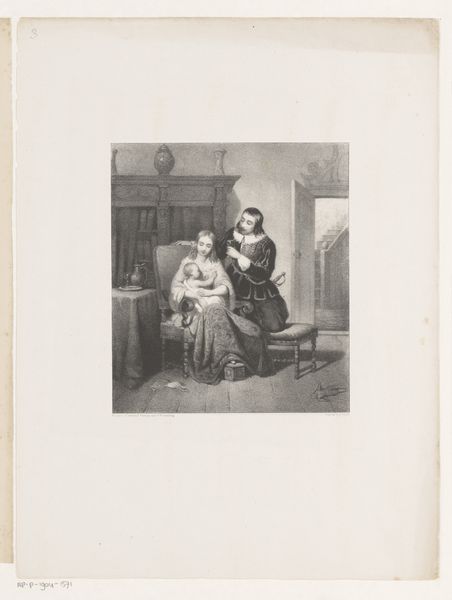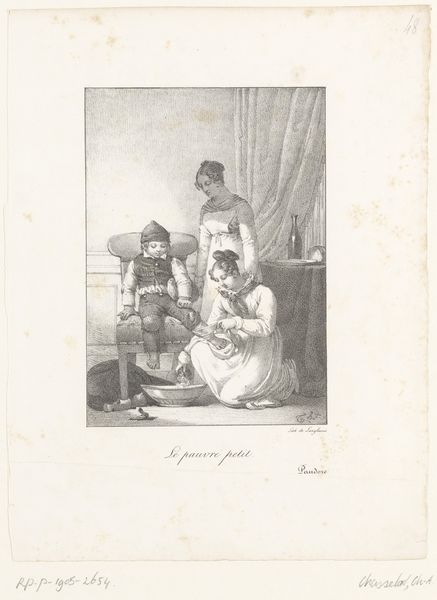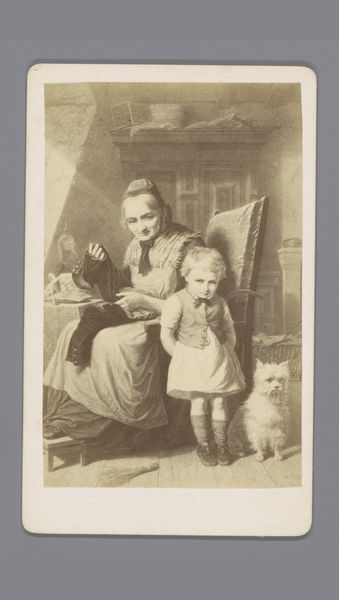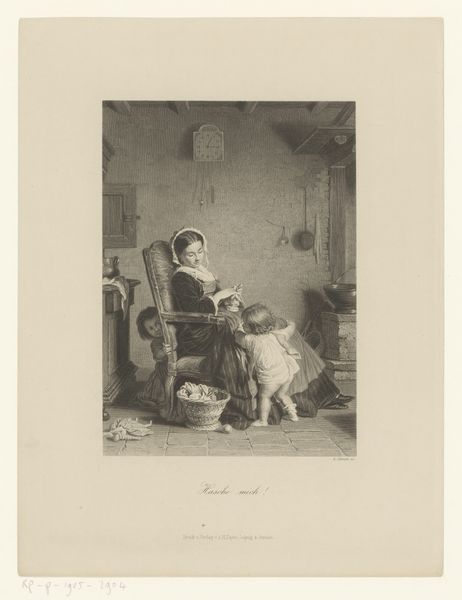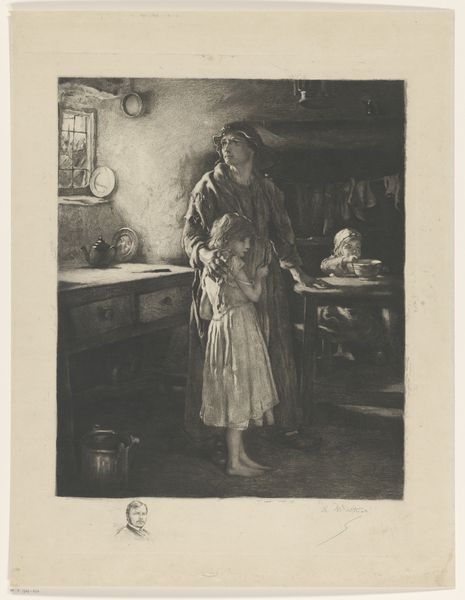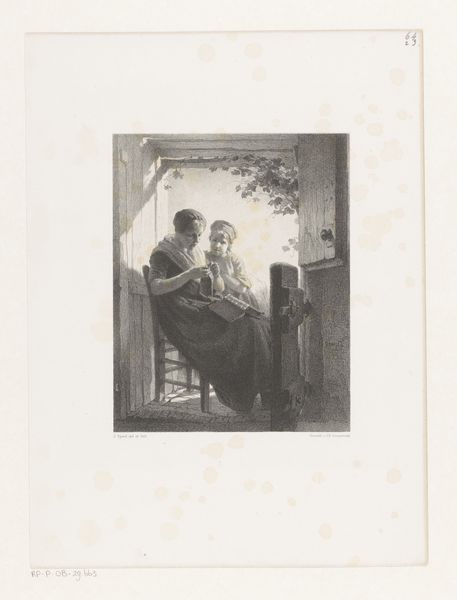
Dimensions: height 572 mm, width 374 mm
Copyright: Rijks Museum: Open Domain
Curator: Gustave Joseph Biot created this captivating drawing entitled "Mother Holding a Mirror to a Child on her Lap" in 1862. It's currently held at the Rijksmuseum. Editor: My initial impression is of an intimate domestic scene. The soft gradations achieved through the drawing technique create a peaceful, almost ethereal mood. The mirror, of course, draws the eye. Curator: It’s fascinating to consider how genre painting like this reflects shifts in societal values. Neoclassicism still had a hold, yet Realism sought to portray the everyday, focusing on ordinary people and moments rather than idealized historical or mythological subjects. Biot’s image certainly participates in both tendencies. Editor: Absolutely, and the mirror amplifies this duality. Beyond the literal reflection, mirrors symbolize self-awareness and even vanity. The mother holds the mirror for the child, guiding its self-perception. It’s like she’s saying "look at yourself," fostering a nascent consciousness. Plus, the presence of another child watching on the reflection creates more layers about relationships, perspective, and belonging. Curator: And let’s not forget the cultural politics of display. By exhibiting such images, museums essentially validate the domestic sphere as a worthy subject of artistic contemplation. These works can become powerful tools for shaping perceptions of family, motherhood, and childhood. Editor: True. Beyond that, there's the visual motif itself. Mirrors are hardly neutral. They offer us fragmented views. Even distorted truths. Perhaps the baby is not truly seeing their “self,” but a carefully mediated construct offered by the mother figure? Curator: An interesting point! The seemingly simple act of holding a mirror up becomes a complex performance. The art engages the relationship between the family and society. Editor: Exactly. Looking closely makes me realize how even the subtlest arrangement of figures speaks volumes about the construction of identity. Curator: Agreed. There are historical and sociopolitical nuances behind everyday displays such as the one on display here. Editor: Yes, even within quiet domesticity, the artist has woven profound symbols.
Comments
No comments
Be the first to comment and join the conversation on the ultimate creative platform.
